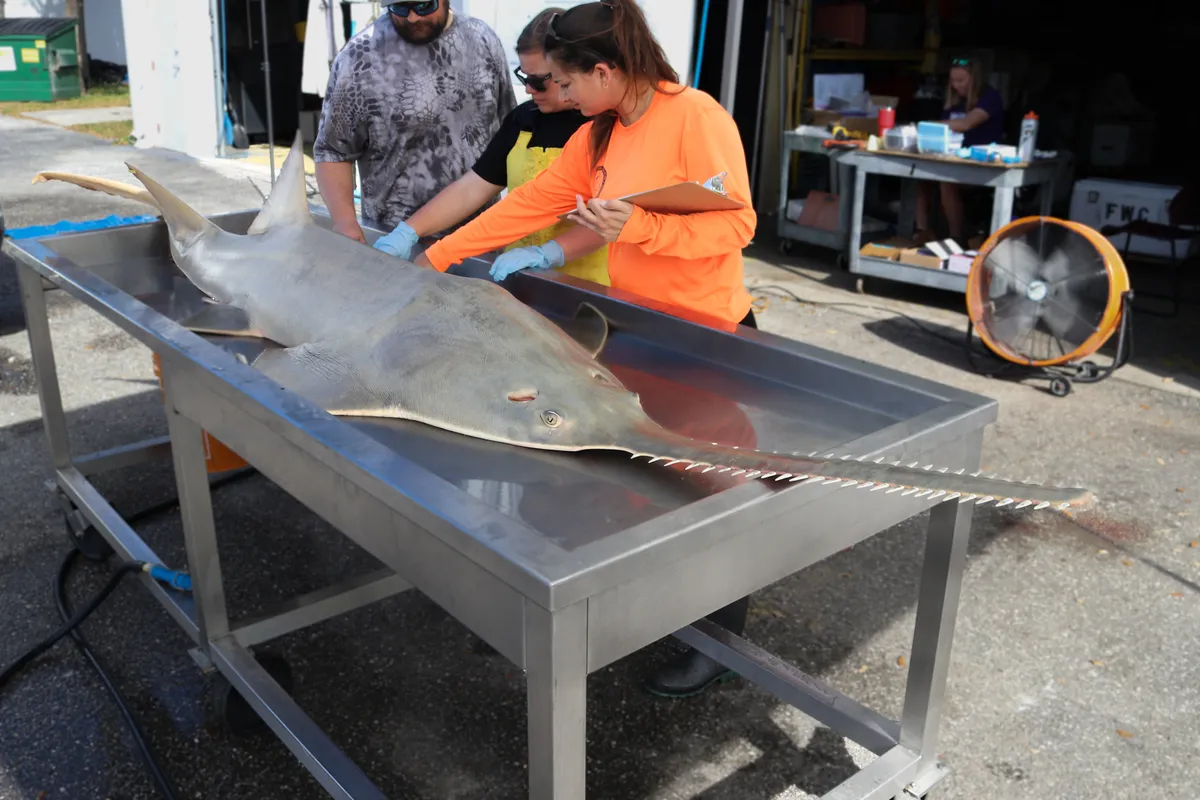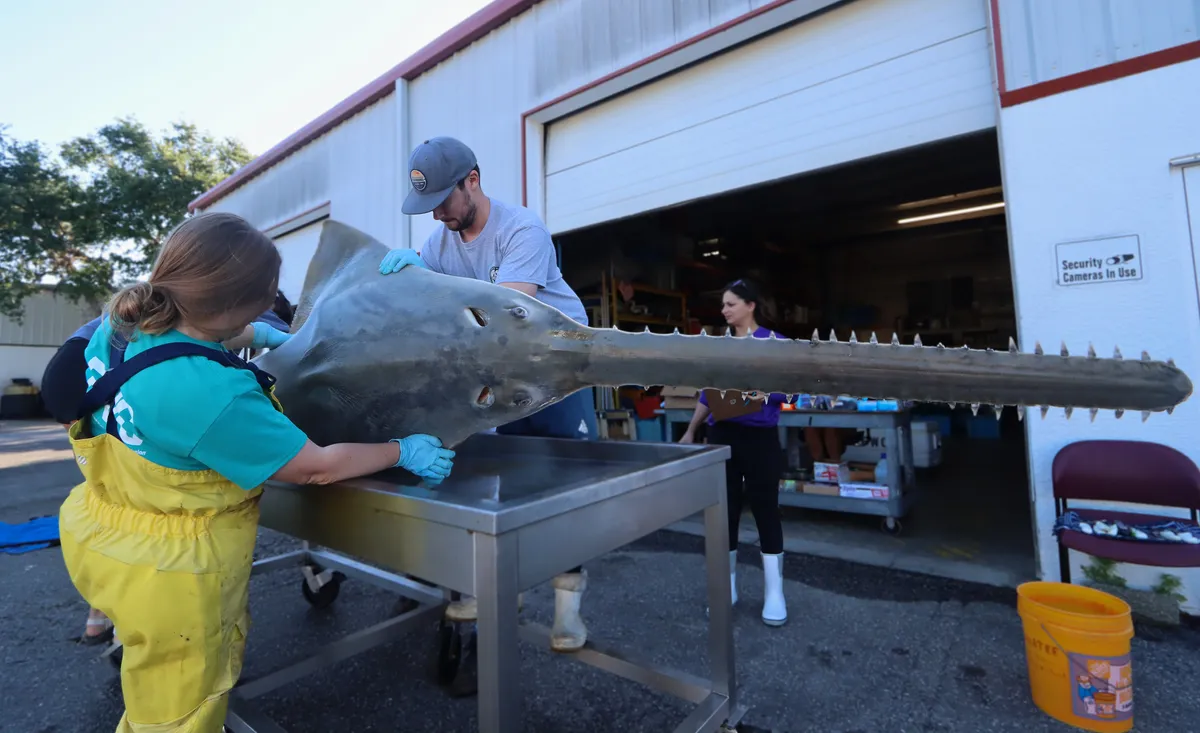It sounds like something from a horror movie: the victim starts behaving erratically, inexplicably spinning in circles and sometimes ending up dead.
But this strange demise is a real phenomenon that has been affecting critically endangered smalltooth sawfish in the Florida Keys.
Scientists are baffled by this strange behaviour, which has hit over 100 sawfish (both adults and juveniles), with 38 confirmed deaths as of 11 April 2024.
“We suspect that total mortalities are greater, since sawfish are negatively buoyant and thus unlikely to float after death,” said Adam Brame, NOAA Fisheries’ sawfish recovery coordinator, in a statement.

- Fish Doorbell: The viral livestream that’s saving fish in the Netherlands
- There’s a fish in Tasmania with hands instead of fins
- It’s a slimy, prehistoric parasite with the mouth of an alien. Meet the sea lamprey
Mystery of the spinning sawfish
Smalltooth sawfish (Pristis pectinata) are an odd-looking fish – imagine stretching out the flat body of a ray into shark-like proportions then strapping a chainsaw blade onto its nose.
They were once found along the US coastline between Texas and North Carolina but now only tend to be found in Florida. They were the first fish to be listed – and so granted protections – under the USA’s Endangered Species Act in 2003.
The population had been recovering but is still very small, so these mysterious deaths could be catastrophic.
Scientists haven’t yet figured out why these fish are spinning but they want to get to the bottom of the mystery as quickly as they can.
An investigation and emergency rescue and release mission has been launched.

Rescue and release mission
The first patient – an 11-foot male smalltooth sawfish – was reported by a member of the public who noticed it swimming in circles in Cudjoe Bay and phoned the Sawfish Hotline.
A team of experts from the Florida Fish and Wildlife Conservation Commission and Mote Marine Laboratory responded: taking samples, measuring and tagging the fish before taking it to Mote’s quarantine facilities for monitoring, treatment and rehabilitation.
This is the first ever rescue and rehabilitation attempt of a wild smalltooth sawfish and it’s not an easy task.
The fish needed respiratory assistance as it was taken by boat to a temporary holding tank. The rescuers then had to make sure it would be able to endure the seven-hour drive to Mote Marine Lab before they loaded it onto a special trailer for the long journey.
It was kept under observation by biologists from Ripley’s Aquariums throughout the trip. It is now said to be recovering.
Although the logistics of a complex operation like this are challenging, it’s worth it to save as many of the distressed sawfish as possible and discover what’s causing this mystery, explains Dr. Michael P. Crosby, Mote President & CEO in a comment: “In the end, our goal is to release healthy sawfish back into the wild.”

Images and video credits: FWC Fish and Wildlife Research Institute